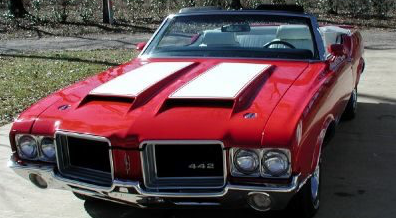
Not so long ago, you could tell quite a bit about someone by the car they drove.
If someone drove a sensible vehicle, such as a small sedan, they were frugal and wanted to make sure their family enjoyed comfort during their travels. If someone drove a big red sports car, they had a lot of money — and a lot of speeding tickets.
In the 50s and 60s in Ashdown, Arkansas, most families had one car. The dad drove it to work, except for one or two days a week when he carpooled and left the car for the mom to get groceries, take kids to the dentist, or get school clothes at Sears.
Today, it seems that almost everyone drives a nice set of wheels. Even kids.
I saw a picture on Facebook of someone’s youngster standing next to a new pickup. The truck was at least as tall as a Greyhound Bus. The kid not only got a nice truck for his first vehicle, the parents added a lift kit.
Back in the early-to-mid-70s, every kid hoped their grandmother had a great car. Because it was a pretty good bet that whatever granny drove was going to be your first ride.
Grandma likely didn’t drive a 1970 Oldsmobile 442 W-30 Convertible, but she might have driven a 1970 Olds Cutlass Supreme, which would have been great. Any of my group of buddies would have been thrilled to have an Oldsmobile.
But instead of a 442 with a Hurst Shifter, an under-dash 8-track, and a tachometer attached to the steering wheel, it was more likely that granny drove a 1966 Plymouth Valiant. Complete with an AM radio, and an in-dash, push-button transmission.
But kids weren’t picky. We’d take anything we could get our hands on. We would have been pleased as punch to have a car, any car, even if it didn’t have doors, windows or seats.
After we got a car, we’d get a job, save our money, and fix it up.
Not these days. People now won’t settle for anything less than a new vehicle, even if it means financing it for as long as their house note.
And I’m honestly not sure why folks are in a big hurry to get new cars. Why the rush? Have you taken a good, long look at what’s coming out of Detroit (or, I guess I should say Mexico)?
Cars used to have style. Even a Plymouth Valiant.
You could tell what vehicle was coming down the road just by the way it looked. Cars made a statement. They had distinctive features. You could tell the difference between a Ford and a Chevy. A Dodge and a Mercury. A Lincoln and a Cadillac.
You knew a caddy when you saw it, even if it was three miles away. The grill, the headlights, the vinyl top, and especially the tail fins told you what it was. Cadillacs were distinct. They were pretty, and they were highly desirable.
Just about everyone aspired to own a Cadillac. When Elvis made it big, he bought Cadillacs like the rest of us bought packs of gum. He gave Coupé de villes as gifts.
Elvis Fan: “Hey, Elvis, I love your Cadillac!”
Elvis: “Well, here you can have it.”
Elvis Fan: “Thank you! Thank you very much.”
Today, I can’t tell the difference between a Cadillac and a Camry. The government has regulated cars into fuel-efficiency facelessness. I don’t think car companies could make vehicles with a personality if they wanted to (which, I don’t think they want to).
They have to worry about whether their cars and trucks can get 382 miles to the gallon, rather than whether the vehicle is something people actually like and are proud to have in their garage.
I miss the days when even if we drove a Plymouth Valiant, we at least had some distinction going down the road. We deserve to have that back.
Let’s each of us go get a 1965 Mustang (or whatever classic you prefer), fix it up, buy extra parts and store them in the barn, and drive that car until the nursing home takes our keys.
We all know what drives us, so let’s roll.
©2022 John Moore
John’s latest book, Puns for Groan People, and his books, Write of Passage: A Southerner’s View of Then and Now Vol. 1 and Vol. 2, are available on his website – TheCountryWriter.com, where you can also send him a message and hear his weekly podcast.
AUG
2022
